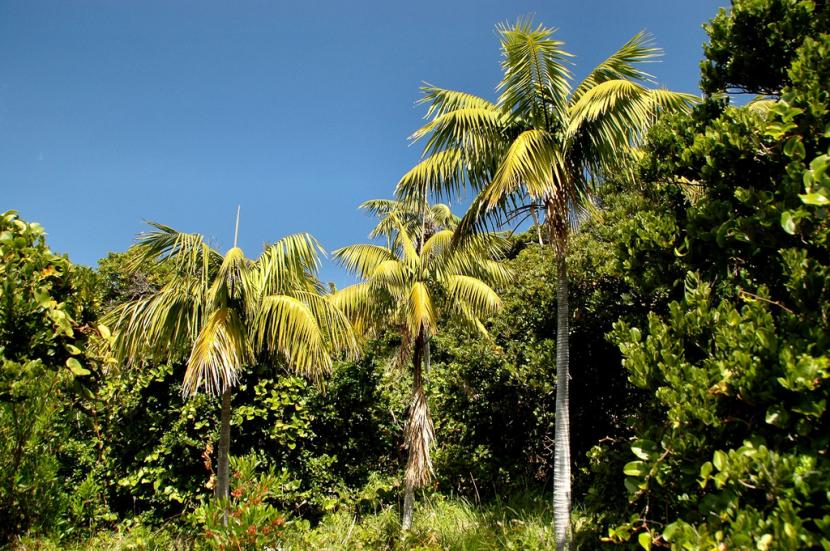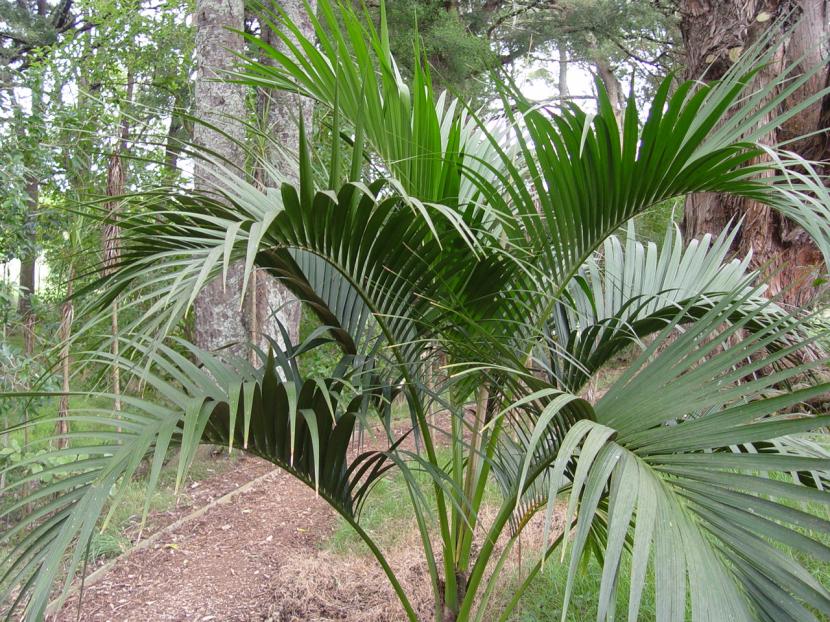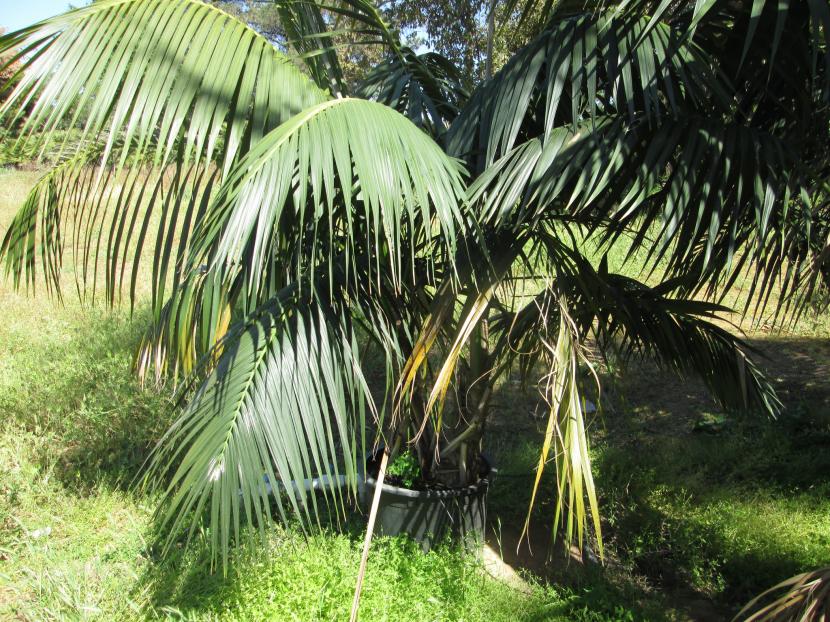
Very good days! How's it going? Today we are finally on Saturday and what better way to start than talking about one of the most popular palm trees: the Kentia. But I'm not going to tell you how to have it perfect indoors ... but outside it, in the garden.
This is a plant that has proven to be the undisputed protagonist of interior design. You can also accompany us when we have visitors or we want to rest in our green corner.

Howea belmoreana
The scientific name of the palm tree that we know so much, is Howea forsteriana. However, she has an almost twin sister who was given the surname Belmoreana. The only notable difference is that the leaves of the H. forsteriana they grow a little more upright, while those of his sister grow somewhat more arched downwards. But both have the same care. Why am I presenting it to you? Well, because you can choose plant both species, both in a large pot and in a corner of your patio where the sunlight does not reach them directly.
One of the most common problems with these palm trees is that its leaves turn dry as soon as they are placed in a very exposed place. Indoors it usually happens often, and when they want to plant outdoors too. Thus, it is highly recommended that they be in shady or partial shade areas.

Howea forsteriana
Kentia is a very cold resistant palm, being able to withstand frosts of up to five degrees Celsius below zero with hardly any damage. It also withstands the wind, but during its first two years of planting it will need a guardian to be able to stay upright if the area is very windy.
If we talk about irrigation, during the summer it has to be frequent, but without flooding the substrate or the earth. A couple of times a week can be more than enough, but if the weather is very dry and hot, you can water up to 3 times. The rest of the year, it will be watered between one and two for every 7 or 10 days. It is highly recommended to pay it with a specific fertilizer for palm trees throughout the growing season, following the manufacturer's recommendations.
By the way, be careful not to confuse it with areca (Dypsis lutescens), since they are really palm trees with different characteristics. Take a look at this video to know how to differentiate them:
Do you dare to have one in your garden?
How much do you get to measure outside?
Hello!
In cultivation it can reach 6m in height, with a trunk diameter of 20cm.
Greetings and happy Sunday!
It gets the sun after noon and throughout the afternoon ... is it a lot of sun or is it okay?
Hi Luis.
It is enough. It is recommended that you do not give it directly, or at most a couple of hours in the early morning or at sunset.
A greeting.
Hello! I have had it for 10 years and inside ... I can't continue with it because it reaches the ceiling (2.5mts), if I take it outside (keeping it in a pot) you say that it will withstand the weather? Frost in winter?
Hello Ana.
Kentia withstands frosts down to -4ºC without problems.
You can put it in the garden if you have it, in a place protected from direct sun. Or move it to a larger pot.
A greeting.